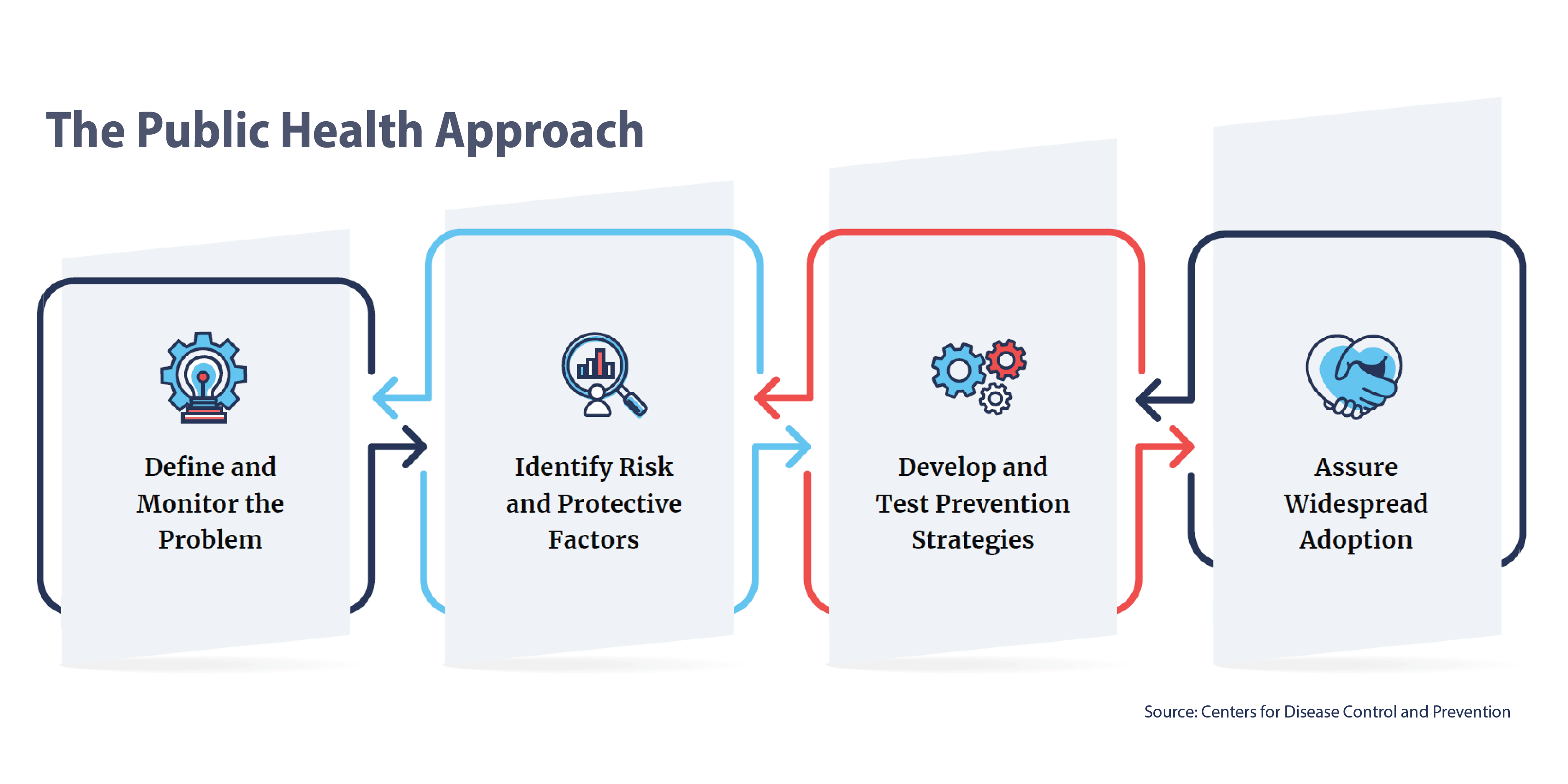What to know
- The focus of public health is on the health, safety, and well-being of entire populations.
- A public health approach strives to provide the maximum benefit for the largest number of people.
- The public health approach, rooted in the scientific method, can be applied to prevent violence as a four-step process.
Overview
Public health draws on a science base that is multi-disciplinary. It relies on knowledge from a broad range of disciplines including medicine, epidemiology, sociology, psychology, criminology, education, and economics. This broad knowledge base has allowed the field of public health to respond successfully to a range of health conditions across the globe.
The public health approach also emphasizes input from diverse sectors including health, education, social services, justice, policy, and the private sector. Collective action on the part of these key collaborators can help in addressing problems like violence.
Steps to take
The public health approach is a four-step process that is rooted in the scientific method. It can be applied to violence and other health problems that affect populations.

Step 1: Define and Monitor the Problem
The first step in preventing violence is to understand the “who,” “what,” “when,” “where,” and “how” associated with it. Grasping the magnitude of the problem involves analyzing data such as the number of violence-related behaviors, injuries, and deaths. Data can demonstrate how frequently violence occurs, where it occurs, trends, and who the victims and perpetrators are. These data can be obtained from police reports, medical examiner files, vital records, hospital charts, registries, population-based surveys, and other sources.
Step 2: Identify Risk and Protective Factors
It is not enough to know the magnitude of a public health problem. It is important to understand what factors protect people or put them at risk for experiencing or perpetrating violence. Risk factors are characteristics that increases the likelihood of a person becoming a victim or perpetrator of violence. Protective factors are characteristics that decreases the likelihood of a person becoming a victim or perpetrator of violence.
Risk and protective factors help identify where prevention efforts need to be focused. Risk factors do not cause violence. The presence of a risk factor does not mean that a person will always experience violence. Victims are never responsible for the harm inflicted upon them.
Step 3: Develop and Test Prevention Strategies
Findings from the research literature and data from needs assessments, community surveys, key collaborator interviews, and focus groups are useful for designing prevention strategies. Using these data and findings is known as an evidence-based approach to program planning. Once prevention strategies are developed or existing strategies are identified, they are then evaluated rigorously to determine their effectiveness.
Step 4: Assure Widespread Adoption
The strategies shown to be effective in step three are then implemented and adopted more broadly. Communities are encouraged to implement strategies based on the best available evidence and to continuously assess whether the strategy is a good fit with the community context and achieving its goal of preventing violence. Dissemination techniques to promote widespread adoption include training, networking, technical assistance, and evaluation.
- Dahlberg LL, Krug EG. Violence: a global public health problem. In: Krug E, Dahlberg LL, Mercy JA, Zwi AB, Lozano R, eds. World Report on Violence and Health. Geneva, Switzerland: World Health Organization; 2002:1-21.
